When is the Next Solar Eclipse? Details Here!
-
Mahi
- NightSky
- No Comments
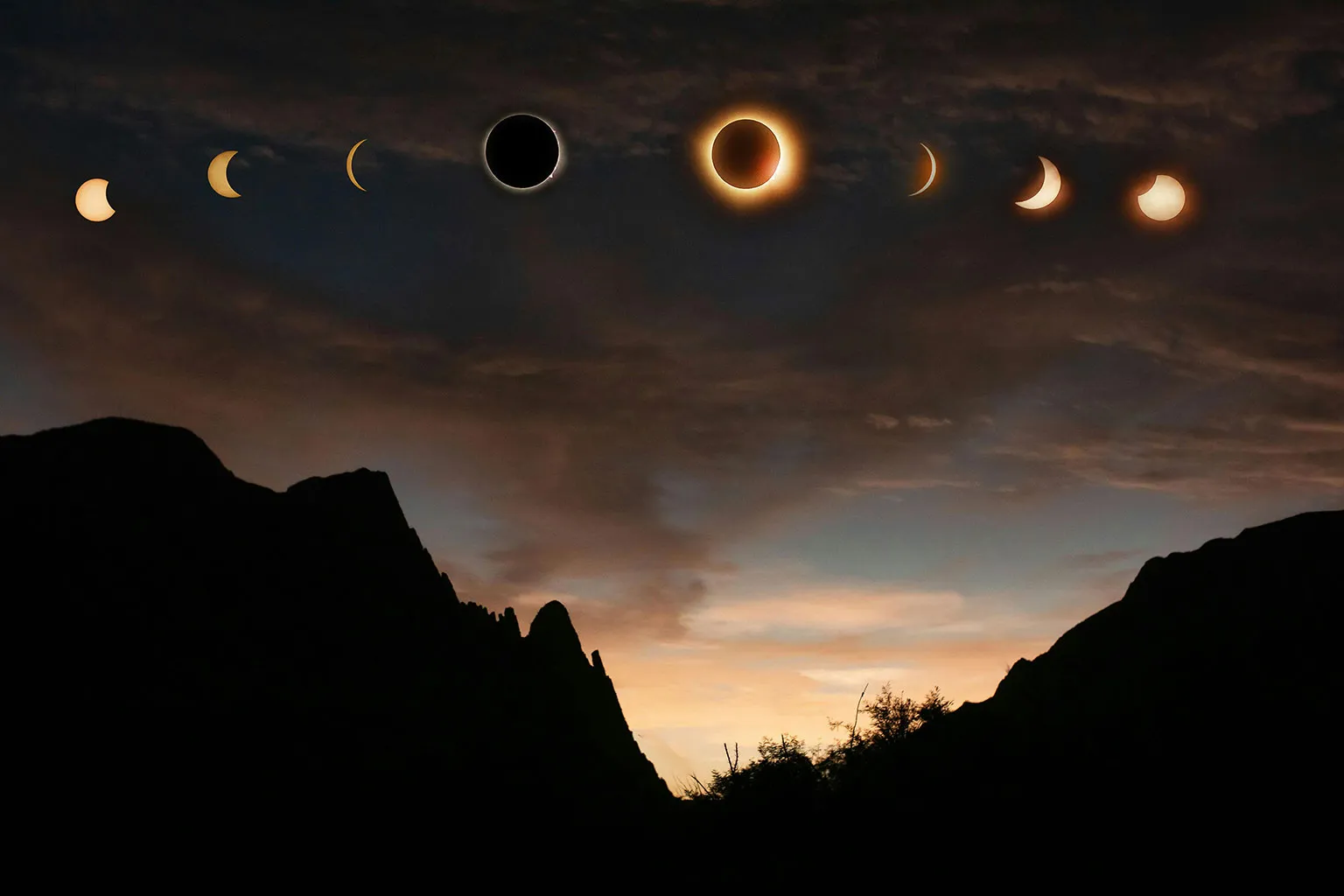
Table of Contents
As enthusiasts of the cosmos, we at Dubaitelescope share your fascination with celestial events. Few spectacles are as awe-inspiring as a solar eclipse. This natural wonder occurs when the Moon passes between the Earth and the Sun. As it casts its shadow, it briefly hides the Sun from view, a breathtaking moment in the sky.
You're likely wondering: When is the next solar eclipse? You’ve come to the right place!
This comprehensive guide has everything you need to know. We’ll share upcoming eclipse dates, show where they’ll be visible, and most importantly, provide essential safety tips. With the right preparation, you’ll be ready to enjoy this magnificent cosmic dance safely and memorably. Let’s dive in!
What is a Solar Eclipse?
If you're eager to know when the next solar eclipse will be, it's helpful to first understand what exactly these captivating events are. A solar eclipse is a magnificent celestial alignment that occurs only under very specific conditions.
Simply put, a solar eclipse happens when the Moon passes directly between the Sun and Earth, casting a shadow on our planet and temporarily blocking the Sun's light. From our perspective on Earth, it looks as though the Sun is either partially or entirely disappearing during the day.
It’s a remarkable coincidence that, even though the Sun is about 400 times larger than the Moon, it's also roughly 400 times farther away. This perfect ratio makes it possible for the Moon to completely cover the Sun's disc when they align just right, leading to a total solar eclipse.
- A Cosmic Coincidence: The apparent size of the Moon and the Sun in our sky is nearly identical.
- Shadow Play: The Moon's shadow falls upon Earth, creating the eclipse effect.
- Day to Twilight: During a total solar eclipse, the daytime sky darkens dramatically, resembling twilight.
How Solar Eclipses Happen
The mechanics behind a solar eclipse are a beautiful display of orbital precision. For a solar eclipse to occur, three celestial bodies, the Sun, the Moon, and the Earth, must align in a precise straight line. This alignment is called a syzygy.
Here's a breakdown of the key factors involved:
- New Moon Phase: A solar eclipse can only happen during the New Moon phase. This is when the Moon is positioned between the Earth and the Sun, and its illuminated side is facing away from us, making it appear invisible in the sky.
- Orbital Inclination: While the Moon orbits Earth roughly once a month, we don't have a solar eclipse every New Moon. This is because the Moon's orbit around Earth is slightly tilted (by about 5 degrees) compared to Earth's orbit around the Sun.
- Nodes of the Orbit: Eclipses only occur when the New Moon happens while the Moon is crossing the ecliptic plane – the imaginary plane of Earth's orbit around the Sun. These intersection points are called "nodes." If a New Moon occurs near one of these nodes, then the Sun, Moon, and Earth are in the necessary straight line for an eclipse to take place.
So, while the question of when the next solar eclipse is often comes up, remember that it's this intricate dance of orbits and precise alignments that makes each eclipse a relatively rare and highly anticipated event. This understanding helps us appreciate the fleeting nature and profound beauty of these celestial spectacles.
What Are the Different Types of Solar Eclipses?
When we talk about when the next solar eclipse is, it's important to understand that not all eclipses are the same. Each type offers a unique and breathtaking celestial show, depending on the precise alignment of the Sun, Moon, and Earth. As experts at Dubaitelescope, we're here to delve into the fascinating variations you might encounter.
Total Solar Eclipse: The Full Spectacle
This is arguably the most dramatic and sought-after type of solar eclipse. A total solar eclipse occurs when the Moon completely blocks the Sun's disk.
From the perspective of observers within the narrow "path of totality," the sky darkens dramatically, stars become visible, and the Sun's ghostly outer atmosphere, the corona, becomes visible. The corona is usually hidden by the Sun's bright face, making this a truly rare and stunning sight.
- Key Characteristic: The Moon perfectly covers the Sun.
- What You See: The Sun's beautiful corona, a sudden drop in temperature, and twilight conditions.
- Rarity: Occurs less frequently in any given location, making it a highly anticipated event.
Annular Solar Eclipse: The "Ring of Fire"
An annular solar eclipse happens when the Moon passes directly in front of the Sun, but it's too far from Earth to completely cover the Sun's disk. Because the Moon appears smaller than the Sun, a bright ring of sunlight remains visible around the Moon's silhouette. This creates a mesmerizing "ring of fire" in the sky.
- Key Characteristic: The Moon appears smaller than the Sun, leaving a bright ring.
- What You See: A brilliant "ring of fire" or annulus.
- Important Note: Unlike a total solar eclipse, the Sun is never fully blocked during an annular eclipse, so proper eye protection is required throughout the entire event.
Partial Solar Eclipse: A Grazing Encounter
A partial solar eclipse occurs when the Moon only partially obscures the Sun. This happens when the Sun, Moon, and Earth are not perfectly aligned, and only part of the Moon's shadow falls on Earth.
From our vantage point, it looks like a bite has been taken out of the Sun. This is the most common type of solar eclipse to experience, as it's visible over a much wider area than total or annular eclipses.
- Key Characteristic: Only a portion of the Sun is covered by the Moon.
- What You See: The Sun appears as a crescent or disc with a segment missing.
- Visibility: Can be seen from a broad region, even if you're outside the path of a total or annular eclipse.
- Safety First: Always use certified solar filters or special eclipse glasses when viewing a partial solar eclipse, as the Sun's rays are still dangerous.
Hybrid Solar Eclipse: A Combination Event
A hybrid solar eclipse is a rare and intriguing type that shifts between being an annular and a total eclipse along its path. This occurs due to the Earth's curvature and the Moon's elliptical orbit. In some parts of the eclipse path, the Moon is just far enough away to create an annular eclipse, while in others, it's close enough to produce a total eclipse.
- Key Characteristic: Transitions from annular to total (or vice-versa) along its path.
- What You See: Observers will witness either a total or an annular eclipse, depending on their precise location along the eclipse path.
- Uniqueness: A fascinating demonstration of orbital mechanics and Earth's curvature.
Understanding these different types will greatly enhance your appreciation when you next hear when the next solar eclipse and have the opportunity to witness one. Each offers a unique perspective on the cosmic ballet above us!
Key Dates for Upcoming Solar Eclipses
Now that we've explored the different types of solar eclipses, the question on many minds is, when is the next solar eclipse that I can look forward to? As experts at Dubaitelescope, we're thrilled to provide you with a clear roadmap of the most anticipated solar eclipses coming our way. Marking these dates on your calendar will ensure you're ready for these incredible celestial events.
The Next Solar Eclipse: September 21, 2025 (Partial)
Get ready for a partial solar eclipse on September 21, 2025. While not a total or annular event, partial eclipses still offer a fantastic opportunity to safely observe our Moon taking a bite out of the Sun.
- Date: Saturday, September 21, 2025
- Type: Partial Solar Eclipse
- Visibility: This partial eclipse will be visible primarily from Antarctica, the southern Indian Ocean, and parts of the southern Atlantic Ocean. For those located in these remote areas, it will offer a subtle yet intriguing celestial display. Unfortunately, it will not be visible from Istanbul or wider Turkey.
- Maximum Obscuration: The maximum coverage of the Sun will occur over Antarctica, where a significant portion of the Sun will be obscured.
- Safety Reminder: Even during a partial eclipse, it is crucial to use certified solar eclipse glasses or other safe viewing methods to protect your eyes. Never look directly at the Sun.
Upcoming Annular Solar Eclipse: February 17, 2026
Following the partial eclipse, the universe has another treat in store. The next significant event will be an annular solar eclipse on February 17, 2026. This "ring of fire" event is always a captivating sight, provided you are in the right location.
- Date: Tuesday, February 17, 2026
- Type: Annular Solar Eclipse
- Visibility Path: The narrow path of annularity will sweep across Antarctica once again. Specific remote locations on the continent will experience the full "ring of fire." Parts of the surrounding southern Pacific Ocean will experience a partial solar eclipse.
- Why It's Special: An annular eclipse occurs when the Moon is too far from Earth in its orbit to completely cover the Sun, leaving a stunning ring of sunlight visible.
- Viewing Precautions: As always, for an annular eclipse, special solar filters or eclipse glasses must be worn at all times when looking at the Sun, even during the peak of the event.
Next Total Solar Eclipse: August 12, 2026
For those eager to experience the truly breathtaking phenomenon of a total solar eclipse, mark your calendars for August 12, 2026. This will be the next opportunity to witness the Sun's magnificent corona.
- Date: Wednesday, August 12, 2026
- Type: Total Solar Eclipse
Path of Totality: The path of totality will begin in the Arctic, pass over Greenland, then cross Iceland, and move into Spain before concluding over the Mediterranean Sea. This offers a fantastic opportunity for many Europeans to witness totality.
- Iceland: The entire country of Iceland will be within the path of totality, making it an excellent destination for eclipse chasers.
- Spain: Large parts of northern Spain, including cities like Bilbao and Zaragoza, will experience totality. The capital, Madrid, will experience a very deep partial eclipse, but not totality.
What to Expect: Within the path of totality, the sky will darken, stars will appear, and the Sun's elusive corona will become visible for a few magical minutes.
Planning: Total solar eclipses are rare in any single location, and accommodation and travel in the path of totality fill up quickly. If you plan to travel for this event, start making arrangements well in advance. Remember, for those outside the path of totality, this will appear as a partial solar eclipse, requiring proper eye protection.
These upcoming dates provide exciting opportunities to witness the wonders of our solar system. As Dubaitelescope, we encourage you to plan safely and enjoy these magnificent celestial displays!
Global Visibility: Where to See the Next Solar Eclipse
As celestial enthusiasts, knowing when the next solar eclipse is is only half the fun! The other crucial piece of information is where in the world you need to be to witness these magnificent events.
The visibility of a solar eclipse is highly dependent on the Moon's shadow path across the Earth. Here at Dubaitelescope, we’ve gathered accurate and up-to-date details for the most anticipated upcoming solar eclipses.
Visibility Map: September 21, 2025 Partial Solar Eclipse
The next significant solar eclipse on our calendar is a deep partial solar eclipse occurring on September 21, 2025. While not a total or annular event, it promises a substantial obscuration of the Sun for those in the right locations.
- Primary Visibility Regions: This eclipse will be primarily visible from the South Pacific, encompassing New Zealand and parts of Antarctica. A thin strip of Australia's eastern coast will also catch a glimpse.
Key Locations for Best View:
- New Zealand: Especially the southern part of the South Island, where a substantial portion of the Sun will be covered.
- Antarctica: Various research stations will experience the partial eclipse, with the maximum obscuration occurring over the Southern Ocean between New Zealand and a remote part of Antarctica.
Important Note: Even though it's a partial eclipse, it is never safe to look directly at the Sun without proper, certified solar eclipse glasses or viewers.
Regions for February 17, 2026, Annular Solar Eclipse
Following the partial eclipse, the annular solar eclipse of February 17, 2026, will present the captivating "ring of fire" to a very specific part of the globe.
- Path of Annularity: The path where the "ring of fire" will be visible is extremely remote, crossing primarily over Antarctica.
Partial Eclipse Visibility: Outside of this narrow path, a partial solar eclipse will be visible from:
- Southern parts of South America: Including areas of Argentina and Chile.
- Southern Africa: Countries like South Africa, Namibia, Botswana, and others will experience a partial eclipse.
- Parts of the Pacific, Atlantic, and Indian Oceans.
For the Adventurous: If you dream of seeing an annular eclipse, your best bet for this particular event would involve an expedition to Antarctica, or observing the partial phases from the southern tips of continents.
Path of Totality: August 12, 2026 Total Solar Eclipse
Many eclipse chasers eagerly anticipate the total solar eclipse on August 12, 2026. This event will bring the rare experience of totality to parts of Europe and the Arctic.
Primary Path of Totality: The path of totality will sweep across:
- The Arctic Ocean
- Greenland
- Iceland (including the capital Reykjavík, which hasn't seen a total eclipse since 1433!)
- The Atlantic Ocean
- Northern Spain (including cities like Gijón, Oviedo, and Valladolid)
- A very small, extreme northeastern tip of Portugal.
Key Viewing Considerations:
- Iceland: Offers excellent viewing opportunities, though the weather can be a factor. Many tours are already being planned.
- Spain: The eclipse will occur in the late afternoon, potentially offering stunning views close to sunset, especially along coastal areas. Cities like Mallorca will also experience totality.
Partial Eclipse Visibility: This event will produce a significant partial solar eclipse that will be visible across much of Europe and parts of North Africa.
Knowing when the next solar eclipse is and precisely where to go allows you to plan your journey of a lifetime. Always remember to prioritize safety with certified viewing equipment!
Detailed Calendar of Solar Eclipses: 2025-2030
For those eager to mark their calendars and plan their next cosmic adventure, knowing when the next solar eclipse is paramount. Here at Dubaitelescope, we've compiled a comprehensive list of solar eclipses from 2025 through 2030, leveraging data from reputable astronomical sources. This will help you identify opportunities to witness these amazing events, whether from your backyard or a planned expedition.
Solar Eclipses in 2025
The year 2025 will feature two partial solar eclipses. While not offering the full spectacle of totality, they still present a fantastic opportunity to observe the Moon's subtle dance across the Sun's face with proper protection.
March 29, 2025: Partial Solar Eclipse
- Visibility: This partial eclipse will be visible across much of Europe, northwest Africa, northern Asia, Greenland, Iceland, and parts of the Atlantic and Arctic Oceans. For some areas, like the northeastern United States, it may be in progress during sunrise.
- Maximum Obscuration: The Moon will cover a significant portion of the Sun, but not entirely.
September 21, 2025: Partial Solar Eclipse
- Visibility: This event will be visible from the southern parts of Australia, New Zealand, Antarctica, the Pacific Ocean, and the Atlantic Ocean.
Solar Eclipses in 2026
The year 2026 brings excitement with both an annular and a highly anticipated total solar eclipse!
February 17, 2026: Annular Solar Eclipse
- Visibility: The "ring of fire" will be visible from a path crossing Antarctica and the southern tip of South America. Partial phases will be seen from wider regions of South America, Africa, and Antarctica.
August 12, 2026: Total Solar Eclipse
- Visibility: This is one of the most anticipated events. The path of totality will sweep across Greenland, Iceland, Spain, and a tiny sliver of Portugal, and parts of Russia.
- Partial Phases: A partial eclipse will be widely visible across Europe, parts of Africa, and North America.
Solar Eclipses in 2027
Another year with two significant solar eclipses, including a long-duration total eclipse.
February 6, 2027: Annular Solar Eclipse
- Visibility: The annular path will cross parts of South America, the Atlantic Ocean, and Africa, including countries like Gabon, the Republic of the Congo, the Democratic Republic of the Congo, Rwanda, Uganda, Kenya, and Somalia.
August 2, 2027: Total Solar Eclipse
- Visibility: The path of totality will stretch across North Africa (including Egypt, particularly Luxor and Aswan, and parts of Morocco, Algeria, Tunisia, and Libya), Saudi Arabia, Yemen, Somalia, and the Indian Ocean.
- Significance: This will be a particularly long total eclipse, offering extended viewing opportunities for those in the path.
Solar Eclipses in 2028
The year 2028 features an annular eclipse followed by a total solar eclipse.
January 26, 2028: Annular Solar Eclipse
- Visibility: The "ring of fire" will be visible across parts of South America (e.g., Ecuador, Peru, Brazil), the Atlantic Ocean, and Africa (e.g., Gabon, Democratic Republic of the Congo).
July 22, 2028: Total Solar Eclipse
- Visibility: This total eclipse will be a treat for Australia and New Zealand. The path of totality will cross Western Australia, the Northern Territory, Queensland, and then New Zealand's South Island.
Solar Eclipses in 2029
The year 2029 will see a series of partial solar eclipses, making it a year for widespread, though less dramatic, observations.
January 14, 2029: Partial Solar Eclipse
- Visibility: Visible mainly from North America and Central America.
June 12, 2029: Partial Solar Eclipse
- Visibility: This partial eclipse will be seen from parts of Northern and Central Europe, northern Russia, Greenland, Alaska, and northwestern Canada.
July 11, 2029: Partial Solar Eclipse
- Visibility: Another partial eclipse, visible from Antarctica and the Southern Ocean.
December 5, 2029: Partial Solar Eclipse
- Visibility: Observable from Scandinavia, northern Europe, and parts of Russia.
Solar Eclipses in 2030
The final year in this review period brings both an annular and a total solar eclipse.
June 1, 2030: Annular Solar Eclipse
- Visibility: The annular path will cross Central Africa (e.g., Democratic Republic of the Congo, Uganda, Kenya, Somalia), the Indian Ocean, and Australia.
November 25, 2030: Total Solar Eclipse
- Visibility: The path of totality will stretch across southern Africa (Botswana, South Africa) and then sweep across the Indian Ocean to Australia.
This detailed calendar should give you a clear answer to when the next solar eclipse you can potentially observe, no matter your location! Remember to always verify precise timings and local visibility closer to the date of any eclipse using specialized astronomical resources.
Is the Next Solar Eclipse Visible from Turkey? Future Opportunities!
For our astronomy enthusiasts in Turkey, the question of when the next solar eclipse that will be visible from our skies is a common one. While total solar eclipses are rare in any single location, Turkey has several exciting partial and annular eclipse events coming up, with a highly anticipated total eclipse further in the future. Let's look at the specific details.
Partial Solar Eclipse: August 2, 2027
Mark your calendars! On August 2, 2027, a significant partial solar eclipse will be visible across much of Turkey. This event is part of a total solar eclipse that will sweep across North Africa and parts of Europe and the Middle East, with its path of totality passing over countries like Egypt and Spain.
While Turkey will not experience totality, we will still witness a considerable portion of the Sun being obscured by the Moon.
- Expected Visibility: Most of Turkey will experience a significant partial eclipse.
- Obscuration: The percentage of the Sun covered will vary by location. For instance, Istanbul is expected to see over 59% obscuration, while Antalya could see over 71%. Some southern regions might experience even greater coverage.
- Timing: The eclipse will occur during daylight hours, making it an accessible event for observation. For Istanbul, the partial eclipse is expected to begin around 11:27 AM EEST, reach its maximum around 12:39 PM EEST, and conclude around 1:51 PM EEST.
- Safety Reminder: Even during a partial eclipse, it is critical to use proper, certified solar eclipse glasses or viewers to protect your eyes. Never look directly at the Sun without protection.
Annular Solar Eclipse: June 1, 2030
Another exciting event for Turkish sky-watchers will be the annular solar eclipse on June 1, 2030. This "ring of fire" eclipse will have its path of annularity cross directly over certain parts of Turkey, offering a truly spectacular view for those within that narrow band. The path will traverse regions including parts of Malta, Greece, Turkey, Bulgaria, Ukraine, and Russia.
- Type of Eclipse: Annular, meaning a bright ring of sunlight will surround the Moon.
- Visibility in Turkey: Specific regions of Turkey will be within the path of annularity, allowing for the "ring of fire" experience. Areas outside this path will still see a partial solar eclipse.
- Preparation: If you're keen to witness the "ring of fire," it's advisable to identify locations within the path of annularity and plan your viewing trip well in advance.
- Crucial Safety: As with all solar eclipses, certified eye protection is mandatory for the entire duration of an annular eclipse, as the Sun's direct rays are never fully blocked.
Future Total Solar Eclipse for Turkey: April 30, 2060
For those dreaming of a full total solar eclipse experience on Turkish soil, we look forward to April 30, 2060. This distant but highly anticipated event will bring the path of totality right over parts of Turkey.
This means that for observers within this path, the Moon will completely obscure the Sun, revealing its stunning corona and plunging the surroundings into a temporary twilight.
- Significance: This will be a rare opportunity for many in Turkey to experience the full grandeur of a total solar eclipse.
- Path of Totality: The path of totality will sweep across various countries before entering Turkey, offering an amazing spectacle. Key cities and regions in Turkey, such as Antalya, Aksaray, Konya, and Sivas, are projected to be within the path, experiencing several minutes of totality.
- Long-Term Planning: While it's decades away, events like this generate immense interest. Future planning will involve studying precise path maps and securing prime viewing locations.
- The Ultimate Celestial Event: Witnessing totality is a profoundly moving experience for anyone with an interest in astronomy and the natural world.
At Dubaitelescope, we encourage everyone to stay informed about these incredible celestial events. Knowing when the next solar eclipse is for your region allows you to prepare adequately and safely enjoy the beauty of our solar system in action.
Essential Safety Tips for Viewing Any Solar Eclipse
No matter when the next solar eclipse occurs, observing it safely is paramount. As experts at Dubaitelescope, we cannot stress enough the importance of proper eye protection. Looking directly at the Sun, even for a brief moment, can cause severe and permanent eye damage. Your vision is priceless, so let's make sure you enjoy this incredible astronomical event responsibly.
Why Eye Protection is Crucial
The Sun's brilliance, even when partially obscured during an eclipse, can cause irreversible harm to your eyes. This damage, often referred to as "eclipse blindness" or solar retinopathy, occurs when the Sun's intense visible and invisible light rays burn the light-sensitive cells in your retina.
What makes this particularly dangerous is that there are no pain receptors in the retina, meaning you won't feel the damage occurring until it's too late. The effects can be immediate or appear hours later, leading to blurred vision, blind spots, or even complete loss of central vision.
- Invisible Threat: It's not just the bright light; harmful ultraviolet (UV) and infrared (IR) radiation are also present.
- Permanent Damage: Once retinal cells are destroyed, they cannot regenerate, leading to permanent vision impairment.
- No Pain, No Gain: You won't feel pain as your eyes are being damaged, making safe viewing methods critical.
Certified Solar Eclipse Glasses (ISO 12312-2 Standard)
The safest and most popular way to view a solar eclipse directly is by using certified solar eclipse glasses. These aren't just regular sunglasses; they are specially designed with filters that block out almost all harmful visible, UV, and IR light.
- Look for ISO Certification: Always ensure your eclipse glasses meet the ISO 12312-2 international safety standard. This certification is your assurance that the glasses provide adequate protection. Reputable manufacturers will display this on their products.
- Inspect Before Use: Before putting them on, carefully inspect your glasses for any scratches, punctures, or damage. If they are compromised in any way, do not use them.
- Purchase from Trusted Sources: Beware of counterfeit products. Buy your eclipse glasses from reputable astronomy retailers, science museums, or well-known vendors. Dubaitelescope, for example, ensures all our viewing products meet the highest safety standards.
- When to Wear Them: Wear your certified eclipse glasses whenever any part of the Sun is visible. The only time you can remove them during a total solar eclipse is during the brief period of totality, when the Moon completely covers the Sun (this only applies to total eclipses, never partial or annular).
Safe Viewing Alternatives: Pinhole Projectors
If you don't have certified eclipse glasses or if you're looking for a fun and safe group activity, a pinhole projector is an excellent alternative. This method allows you to safely observe the eclipse indirectly by projecting an image of the Sun.
- How it Works: A pinhole projector works by allowing sunlight to pass through a small hole, creating an inverted image of the Sun on a screen placed a short distance away. You observe the projected image, not the Sun directly.
- Easy to Make: You can easily make a pinhole projector using simple household items like two pieces of stiff paper or cardboard. Poke a small, clean hole in one piece, then stand with your back to the Sun and hold the second piece of paper as a screen.
- No Direct Viewing: Remember, you should never look through the pinhole directly at the Sun. Always view the projected image.
Dangers of Unprotected Viewing
The dangers of looking at the Sun without proper protection during an eclipse are severe and cannot be overstated. Relying on inadequate filters, like regular sunglasses, smoked glass, CDs, or photographic film, is incredibly risky and provides insufficient protection against the Sun's intense radiation.
- Solar Retinopathy: This is the primary concern, leading to permanent blind spots, distorted vision, or reduced central vision.
- Photokeratitis: Similar to a sunburn on the eye's surface, causing pain, redness, and light sensitivity. While often temporary, it's extremely uncomfortable.
- Instantaneous Damage: Even a glance without proper protection can cause immediate and lasting harm.
By following these essential safety guidelines, you can ensure that your experience of the next solar eclipse is not only unforgettable but also completely safe for your precious eyesight. Enjoy the wonder of the cosmos responsibly!
What is the Difference Between a Solar and a Lunar Eclipse?
While both solar and lunar eclipses involve the alignment of the Sun, Earth, and Moon, they are distinct events with important differences in how they occur and how we see them.
Understanding these differences helps explain why some eclipses are harder to witness from a specific location. Ultimately, it depends on which body is casting the shadow and which body the shadow falls on.
A solar eclipse happens when the Moon passes directly between the Sun and Earth. It casts a shadow on Earth and briefly blocks sunlight. In this case, the Moon eclipses the Sun from our perspective. Solar eclipses are rarer to witness from any given spot on Earth because the Moon's shadow only covers a small area.
In contrast, a lunar eclipse occurs when the Earth moves between the Sun and the Moon, casting its shadow on the Moon. Here, the Earth eclipses the Moon, often turning it a reddish color. Lunar eclipses are easier to observe because they are visible from anywhere on the night side of Earth where the Moon is above the horizon.
Preparing for the Next Solar Eclipse Experience
Knowing when the next solar eclipse is just the first step; proper preparation is key to making your viewing experience safe, enjoyable, and truly unforgettable. At Dubaitelescope, we want to ensure you're fully equipped to appreciate this magnificent celestial event.
This involves not only gathering the right gear but also strategically choosing your viewing location and considering participation in organized events.
To fully enjoy the next solar eclipse, gathering the right supplies is essential. The absolute most crucial item is certified solar eclipse glasses that meet the ISO 12312-2 international safety standard – never use regular sunglasses. Beyond eye protection, consider bringing a portable chair or blanket for comfort, snacks and drinks to stay energized, and strong sun protection like sunscreen and hats, as UV rays are always present.
For those keen on capturing the moment, a camera equipped with a specialized solar filter is mandatory, and if you plan to use binoculars or a telescope, they too must have purpose-built, certified solar filters securely attached to the front lenses for safe viewing.
Finally, enhance your eclipse experience by choosing the best viewing spot and considering local events. Always check official eclipse maps from reputable sources like NASA to find the precise path of totality or annularity, and keep an eye on weather forecasts for clear skies. Arriving early at your chosen spot will help secure your place.
Additionally, many astronomical societies, science museums, and national parks host public viewing events, offering safe equipment and expert guidance. Joining these gatherings is an excellent way to connect with fellow enthusiasts and gain deeper insights into when the next solar eclipse will occur and the science behind it.
Stay Informed: Tracking Future Solar Eclipses
After learning when the next solar eclipse is and how to prepare for it, the final step for any astronomy enthusiast is to stay consistently informed about future events. The world of eclipses is dynamic, with new predictions and details emerging as dates draw closer.
At Dubaitelescope, we empower you to remain connected to these celestial marvels by guiding you to the most trusted resources and practical methods for tracking them.
Reliable Sources for Eclipse Information
To ensure you're always getting accurate and up-to-date information, it's crucial to consult reputable astronomical and scientific organizations. These are the experts who calculate eclipse paths and times with incredible precision.
- NASA (National Aeronautics and Space Administration): NASA's dedicated eclipse pages are arguably the gold standard for eclipse predictions, maps, and scientific data. Their eclipse bulletins provide highly detailed information for both past and future events.
- Great American Eclipse: While their name focuses on US eclipses, this site offers excellent, easy-to-understand maps and information for many global eclipses, often visualizing paths in a very accessible way.
- Time and Date AS: This website provides user-friendly tables, maps, and information for all types of eclipses, allowing you to easily check visibility from your specific location.
- EclipseWise.com (Fred Espenak): Run by Fred Espenak, a retired NASA astrophysicist often dubbed "Mr. Eclipse," this site is a comprehensive archive of eclipse data, highly detailed maps, and rich historical information. It's a fantastic resource for deep dives.
- Astronomical Societies and Observatories: Many national and local astronomical societies (like the Royal Astronomical Society in the UK or the American Astronomical Society in the US) and major observatories publish information and events related to upcoming eclipses.
Setting Reminders for Upcoming Events
Once you know when the next solar eclipse you're interested in is, don't rely solely on memory! With busy lives, it's easy to miss these fleeting opportunities. Setting up simple reminders can be incredibly effective.
- Calendar Alerts: Use your smartphone or computer's calendar (Google Calendar, Outlook Calendar, Apple Calendar) to set multiple alerts for upcoming eclipses. Set one for several months in advance to begin planning, another for a few weeks before to check weather forecasts and finalize details, and a final one for the day before.
- Astronomy Apps: Many mobile astronomy applications (e.g., SkyView Lite, Star Walk 2, Stellarium Mobile) include eclipse prediction features and can often send push notifications for celestial events visible from your location.
- Newsletter Subscriptions: Subscribe to newsletters from reputable astronomy websites, museums, or telescope retailers (like Dubaitelescope!) who often send out timely reminders and information about significant astronomical events.
- Follow Expert Social Media: Many astronomers, space agencies, and science communicators actively post about upcoming eclipses on platforms like X (formerly Twitter), Instagram, and Facebook. Following them can provide timely updates and reminders.
By leveraging these resources and setting up effective reminders, you'll ensure you're always ready to safely and fully appreciate the next solar eclipse and every other celestial marvel that graces our skies.
Historical Significance of Solar Eclipses
Beyond the simple question of when the next solar eclipse will occur, these celestial events have profoundly impacted humanity throughout history. From inspiring awe and fear in ancient civilizations to providing critical moments for scientific breakthroughs, solar eclipses have always been more than just astronomical phenomena; they have shaped cultures and advanced our understanding of the universe.
Eclipses in Ancient Cultures
For millennia, without the scientific understanding we possess today, solar eclipses were often seen as omens of great significance, interpreted through the lens of mythology, religion, and superstition. Across diverse cultures, eclipses were frequently associated with:
- Divine Intervention and Portents: Many ancient civilizations viewed the Sun as a powerful deity. Its sudden disappearance was often interpreted as a god's anger, a warning, or a sign of impending disaster. For instance, in Mesopotamia, eclipses could signify ill omens for kings, leading to elaborate rituals. The ancient Chinese believed a celestial dragon was devouring the Sun, prompting them to bang drums and make loud noises to scare it away.
- Historical Turning Points: Historical texts frequently link eclipses to major historical events. A famous example is the Battle of the Halys in 585 BCE, fought between the Lydians and the Medes. This battle reportedly ended abruptly when a total solar eclipse occurred, interpreted by both sides as a divine sign to cease hostilities and establish peace.
- Early Astronomical Observation: Despite the fear, some sophisticated ancient cultures, such as the Babylonians and the Maya, meticulously recorded eclipse occurrences. They recognized their cyclical nature and used these observations to develop early calendars and even make rudimentary predictions about future eclipses. These systematic records mark the very beginnings of scientific astronomy.
Scientific Discoveries Enabled by Eclipses
Solar eclipses aren’t just visual wonders; they’re powerful tools for science. Throughout history, these rare moments have led to major discoveries about the Sun and the universe:
- Helium Discovered (1868): During a total eclipse, scientists observed a new yellow spectral line in the Sun’s light. This led to the discovery of helium, the first element found outside Earth.
- Einstein’s Theory Confirmed (1919): A total eclipse allowed astronomers to observe starlight bending around the Sun. This confirmed Einstein’s theory of General Relativity, changing how we understand gravity and the universe.
- Studying the Solar Corona: The Sun’s outer atmosphere (the corona) is visible only during total eclipses. These moments help scientists study solar flares and space weather, vital for protecting satellites and communication systems.
Eclipses continue to be rare windows into solar science, and every new one brings a chance for fresh discovery.
Solar eclipses are more than just astronomical events; they are moments that inspire wonder, curiosity, and connection with the cosmos. Whether it's your first time witnessing one or you're a seasoned skywatcher, each eclipse offers a unique opportunity to pause, look up, and reflect on our place in the universe.
By understanding the types of eclipses, knowing when and where they’ll occur, and preparing with proper safety gear, you can turn a brief celestial moment into a lasting, unforgettable memory.
At Dubaitelescope, we’re here to guide you every step of the way. So mark your calendar, get your eclipse glasses ready, and join millions around the world in experiencing one of nature’s most extraordinary shows, safely, wisely, and in awe.
FAQ
1. How often do solar eclipses occur?
Solar eclipses happen two to five times a year somewhere on Earth. However, total solar eclipses are much rarer for any specific location, often occurring only once every few centuries in the same spot.
2. When is the next solar eclipse visible from Turkey?
The next significant solar eclipse with good visibility from parts of Turkey will be a partial solar eclipse on August 2, 2027. A full annular solar eclipse will occur on June 1, 2030.
3. What are the different types of solar eclipses?
There are four main types: Total (Moon fully blocks the Sun), Annular (Moon leaves a "ring of fire"), Partial (Moon covers only part of the Sun), and Hybrid (switches between total and annular).
4. Can I photograph a solar eclipse safely?
Yes, but only with proper equipment and certified solar filters placed in front of your camera lens. Never point an unfiltered camera at the Sun, as it can damage your camera and your eyes.
5. What is the difference between a solar and a lunar eclipse?
A solar eclipse occurs when the Moon passes between the Sun and Earth (the Moon blocks the Sun). A lunar eclipse occurs when the Earth passes between the Sun and the Moon (Earth's shadow falls on the Moon).
6. Why is it crucial to use special eye protection during a solar eclipse?
Directly looking at the Sun, even when partially eclipsed, can cause permanent severe eye damage or blindness. Regular sunglasses are insufficient. Only use certified solar eclipse glasses (ISO 12312-2 standard).
7. Can I feel a temperature change during a solar eclipse?
During a total solar eclipse, especially, a noticeable drop in temperature can occur as the Sun's light diminishes significantly.
8. Where is the best place to get accurate information about future eclipses?
Reputable sources like NASA, professional astronomical organizations, and dedicated eclipse tracking websites are the best places for accurate dates, paths, and viewing information.
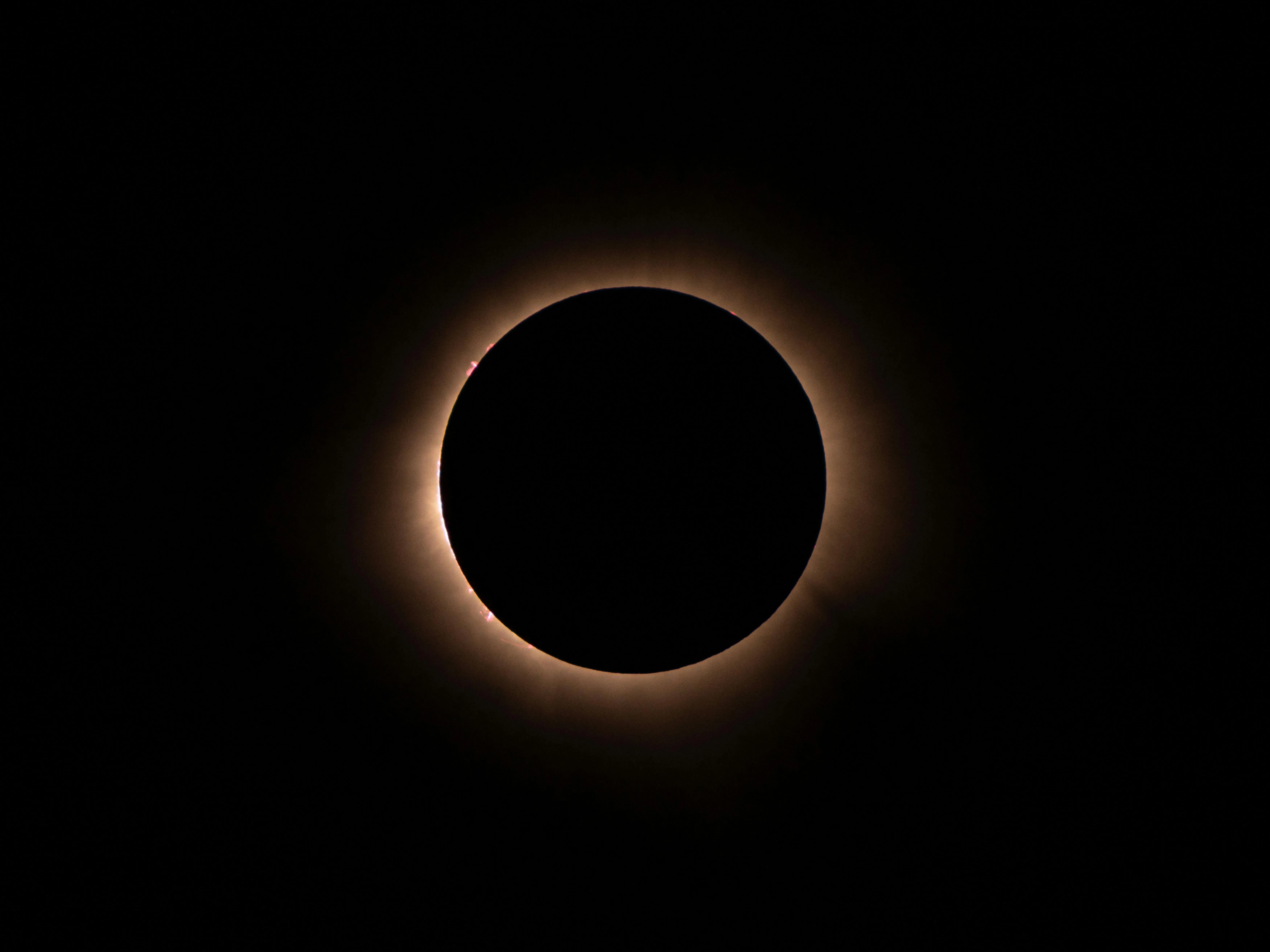
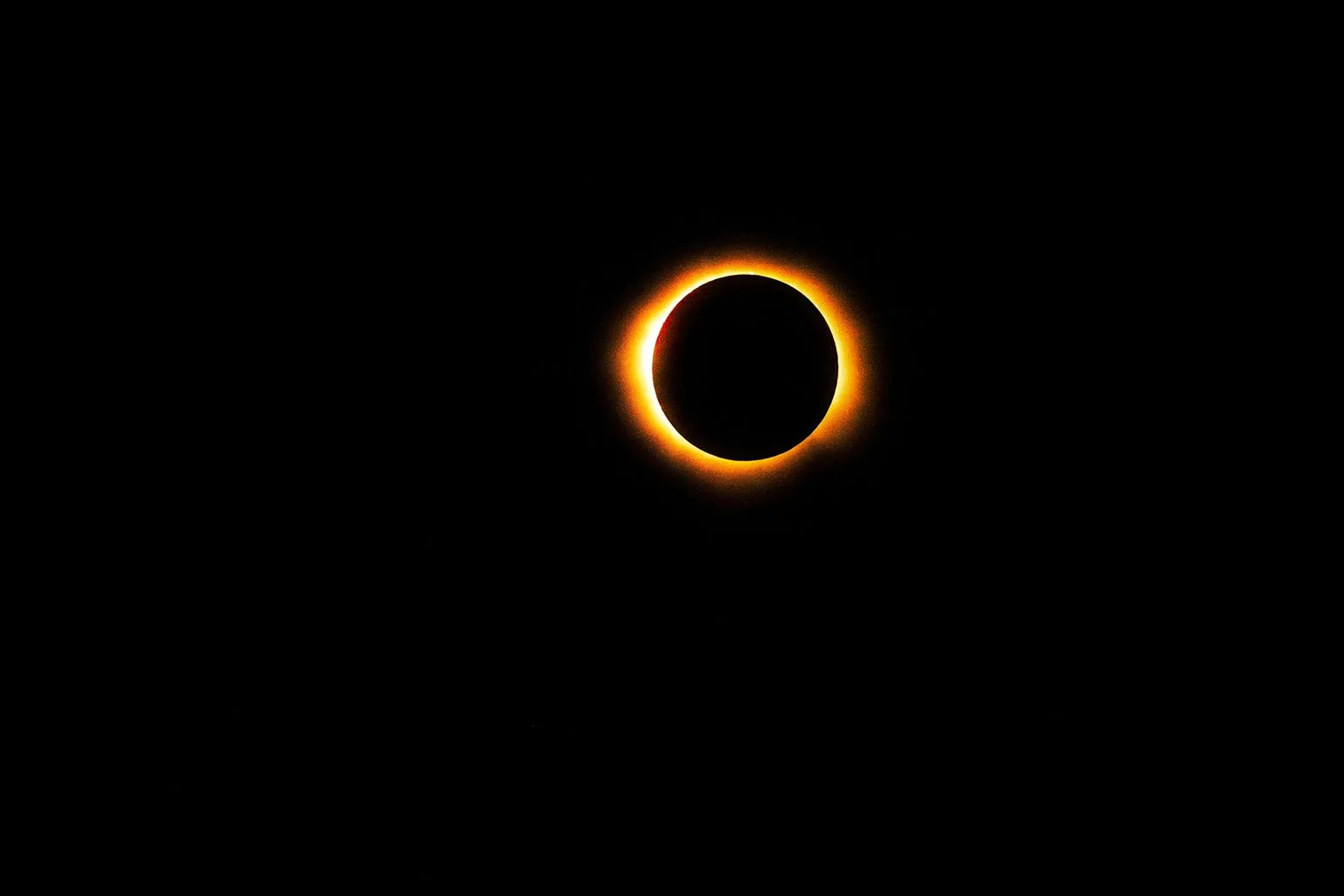
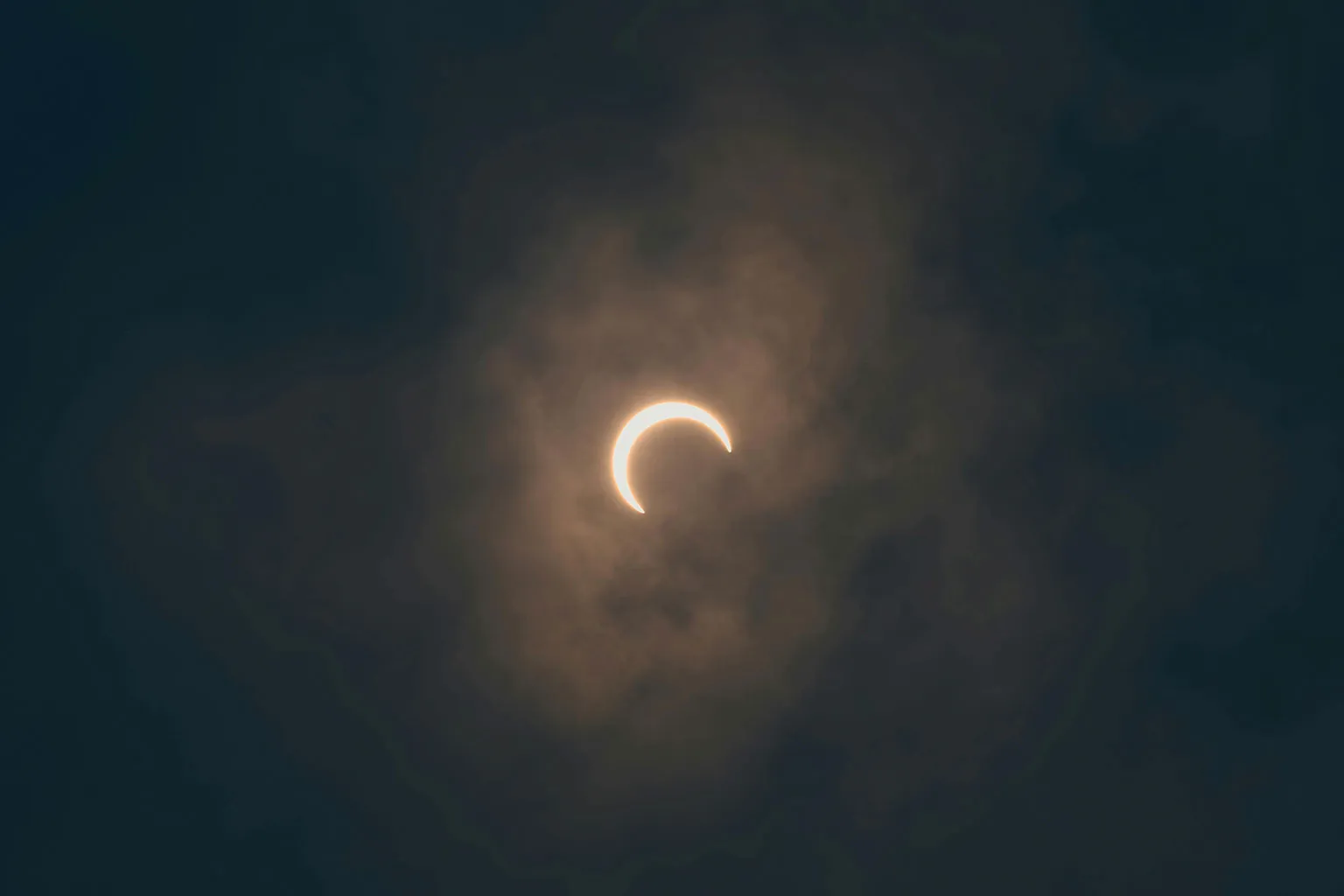
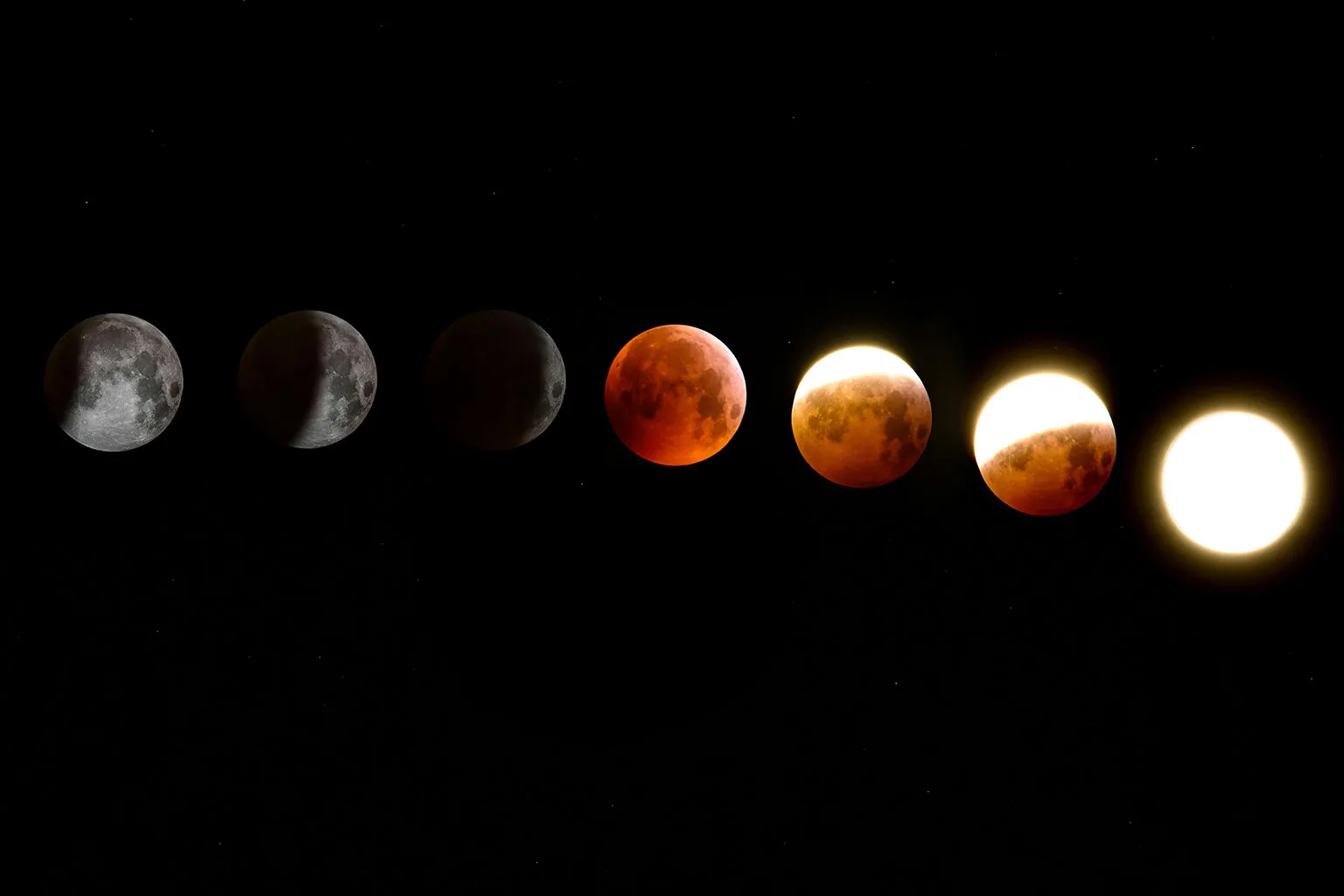
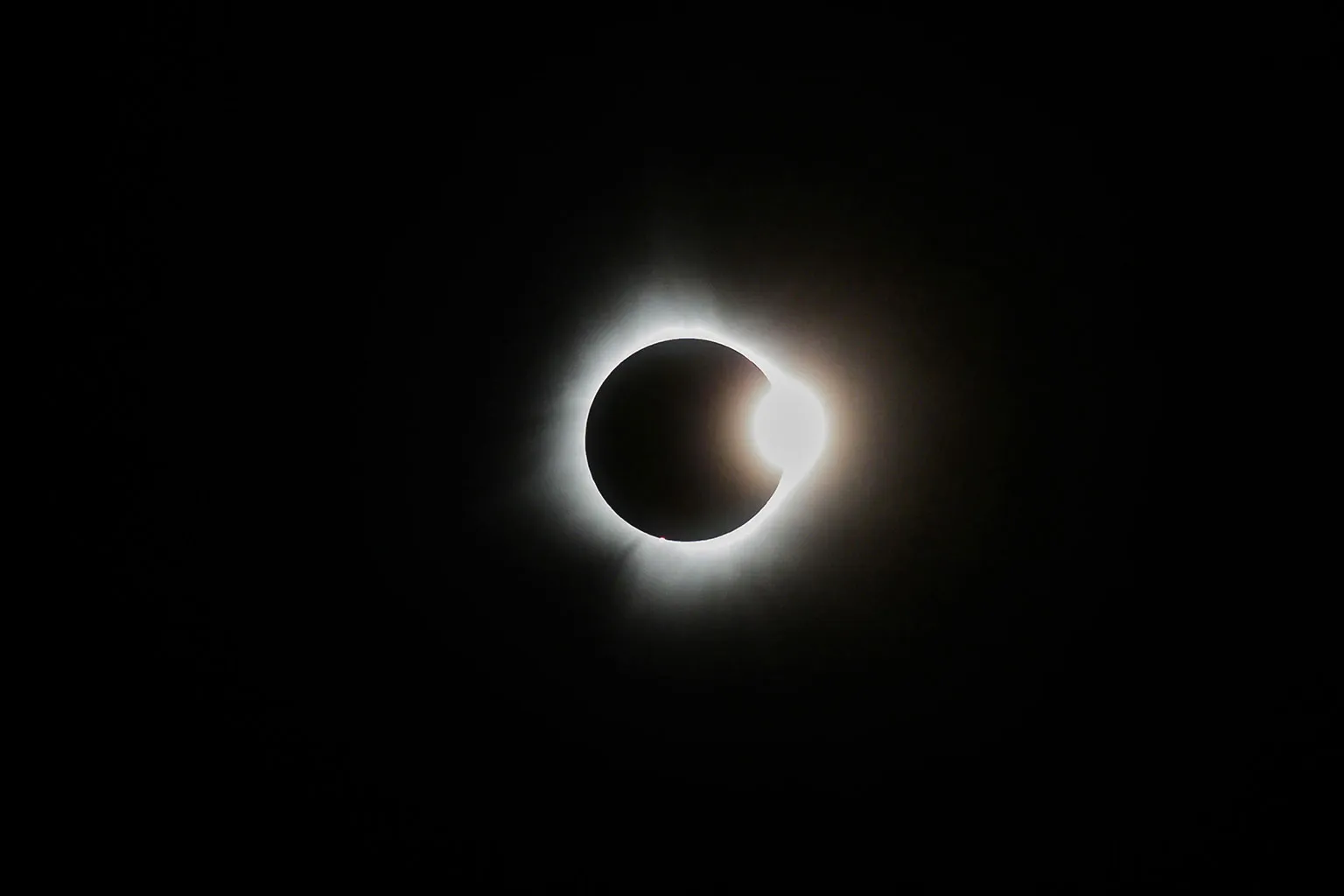
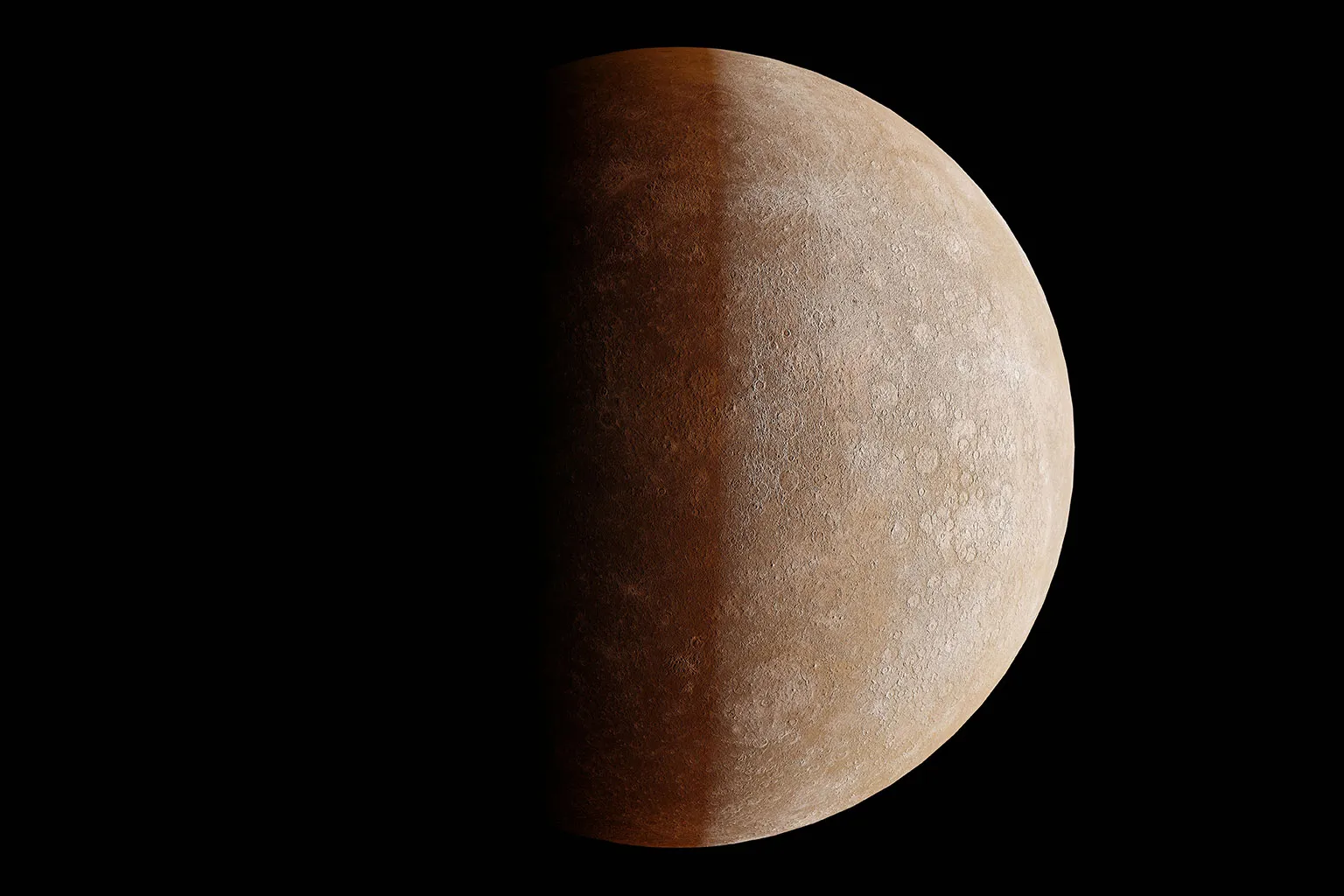
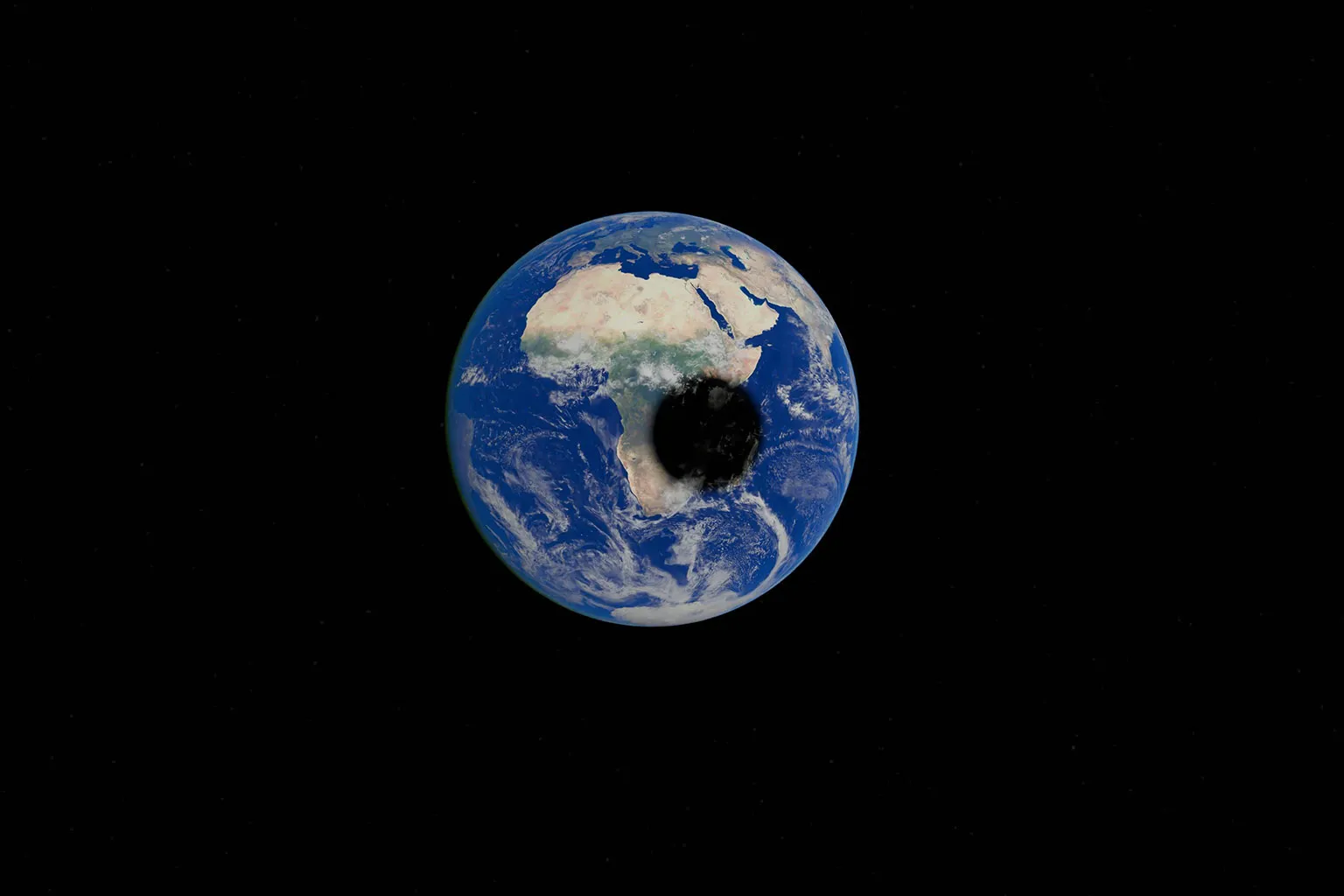

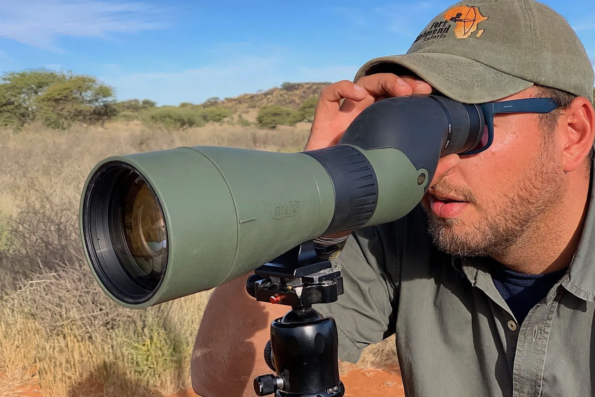

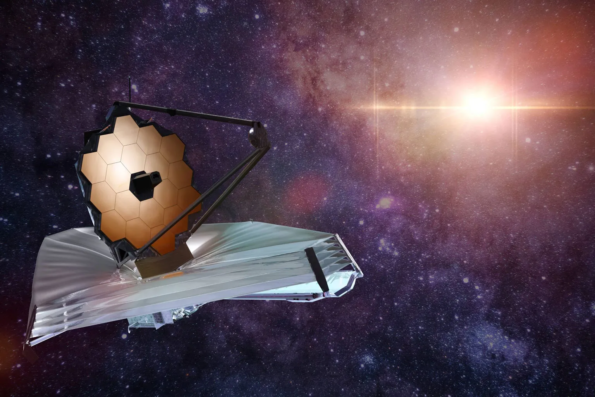

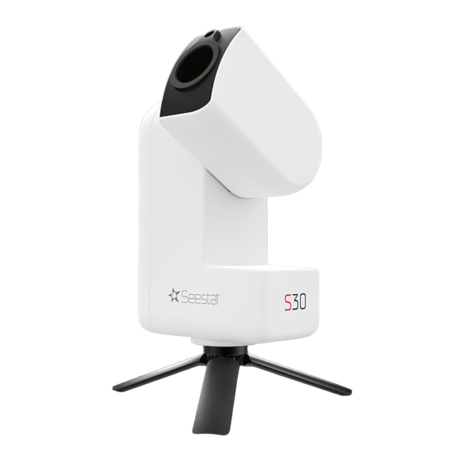
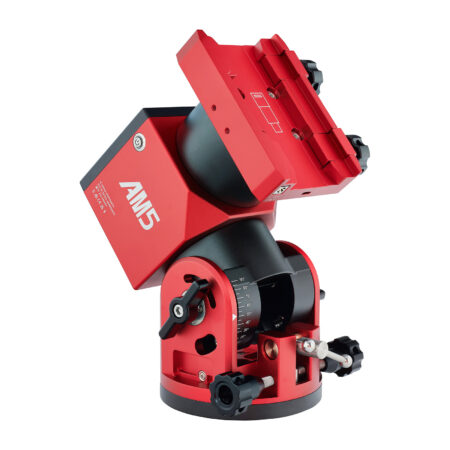
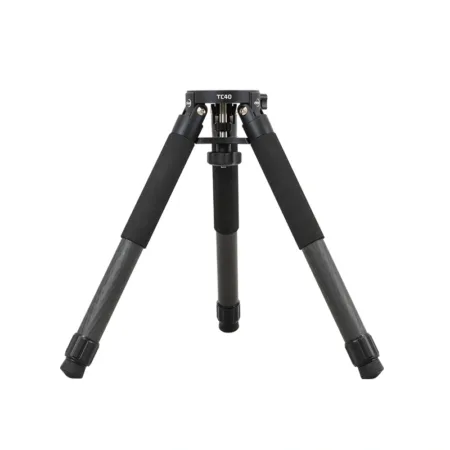
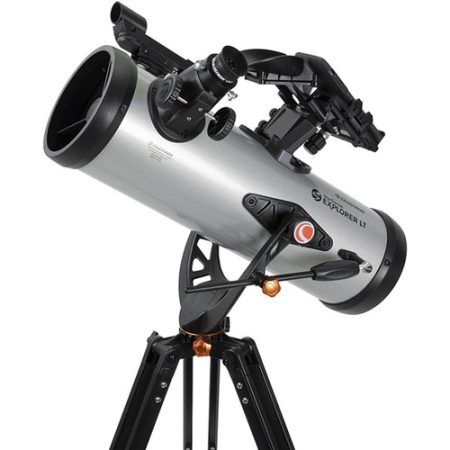
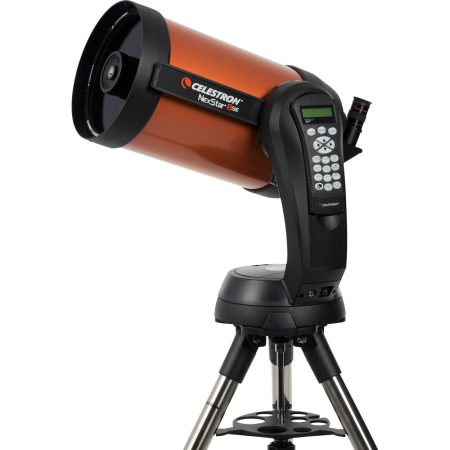
No Comments